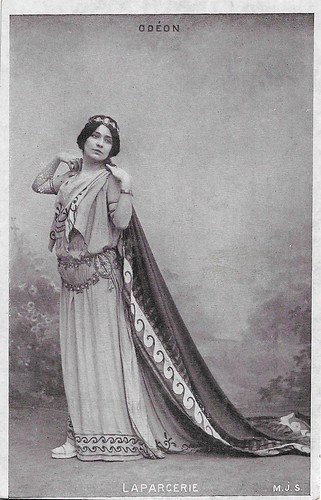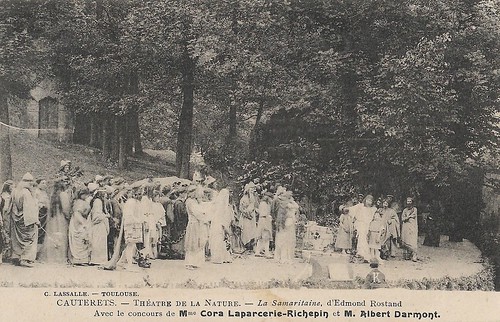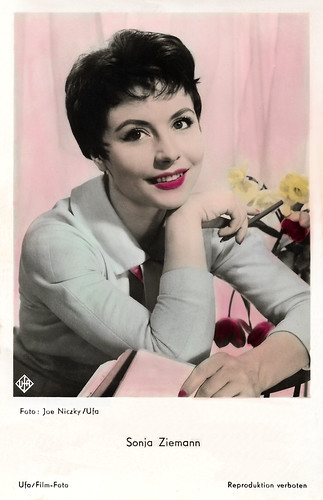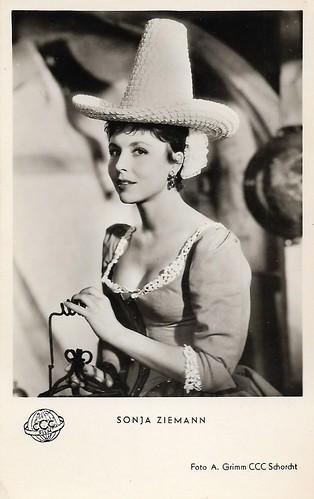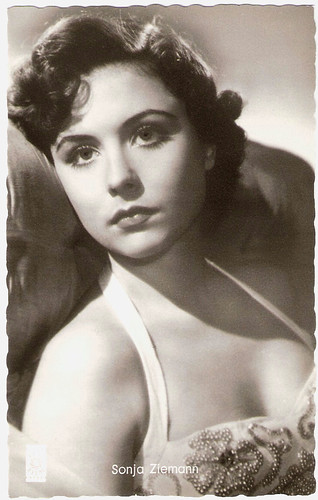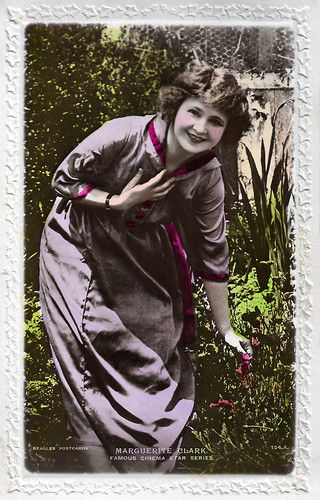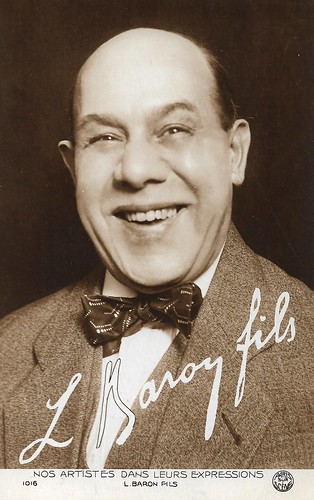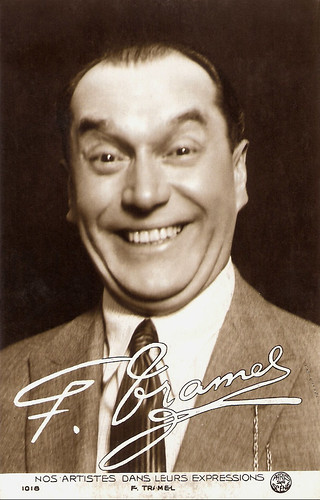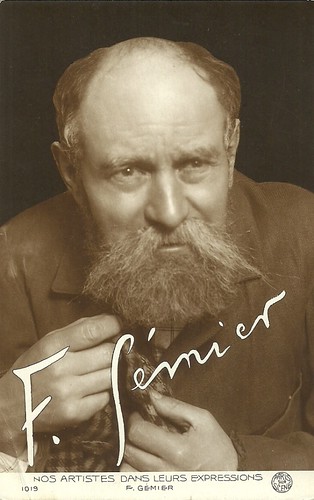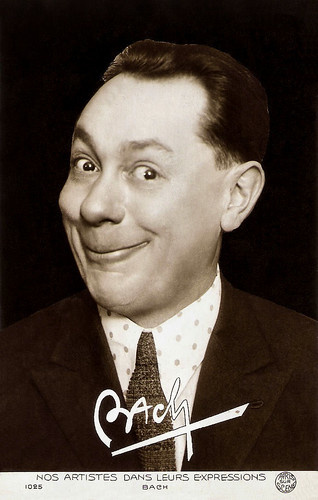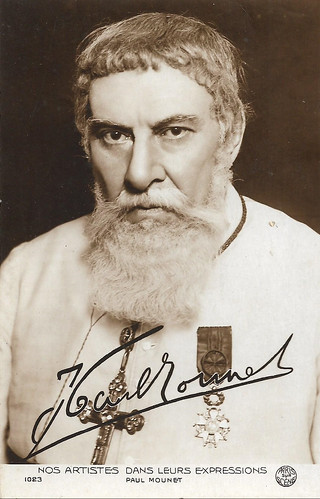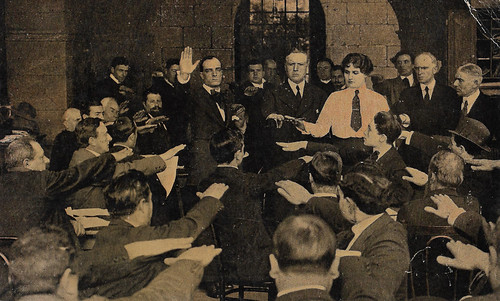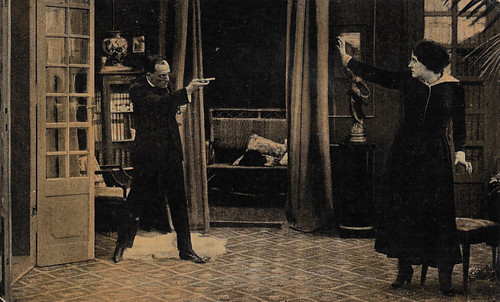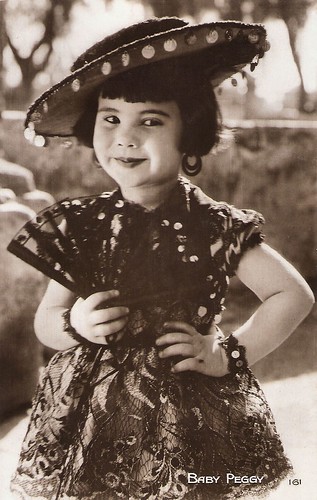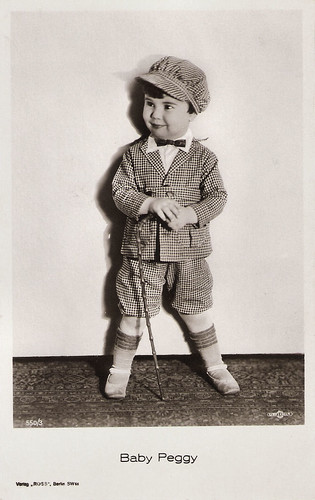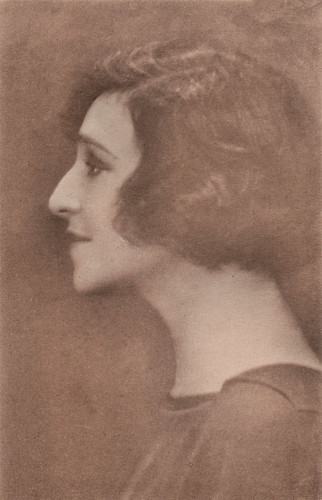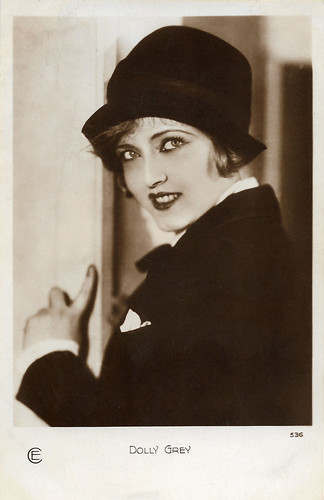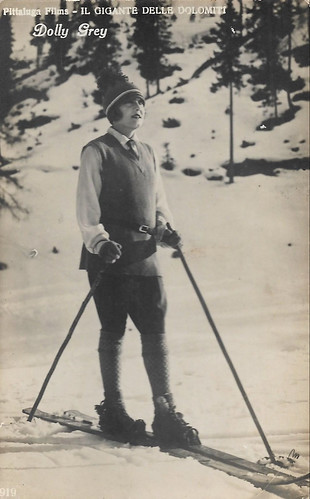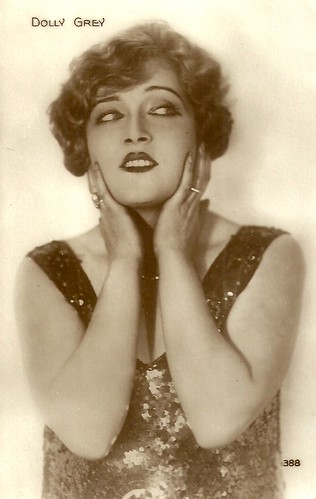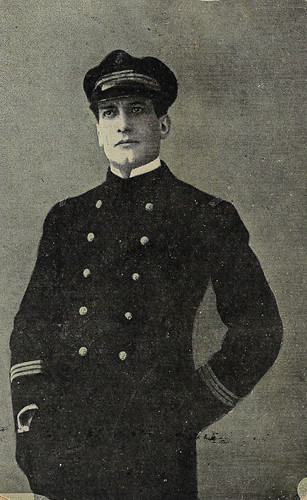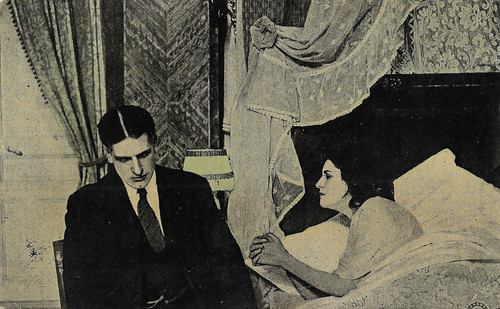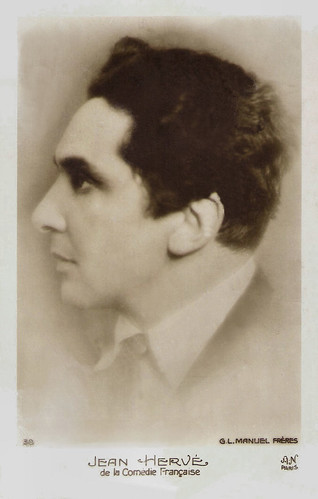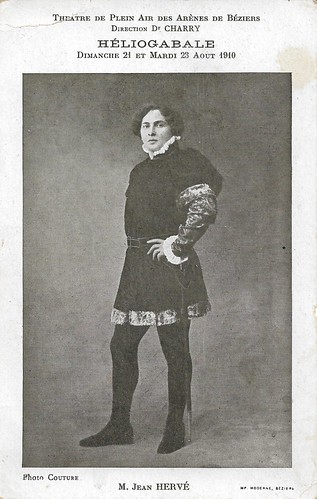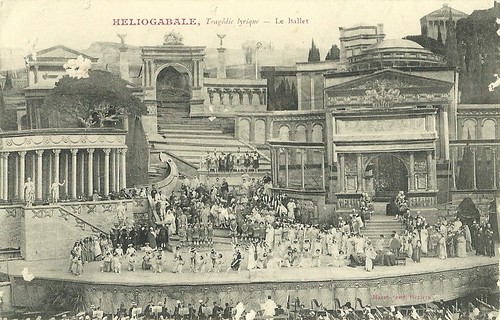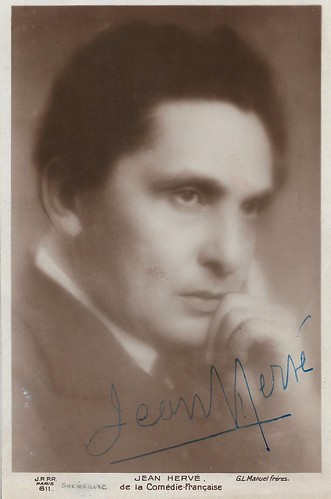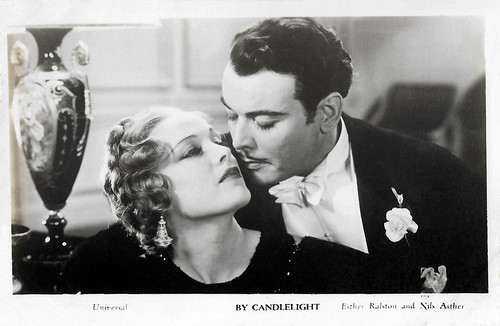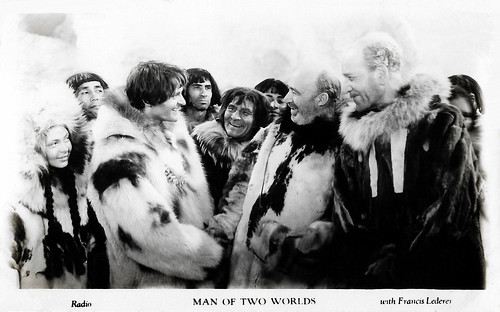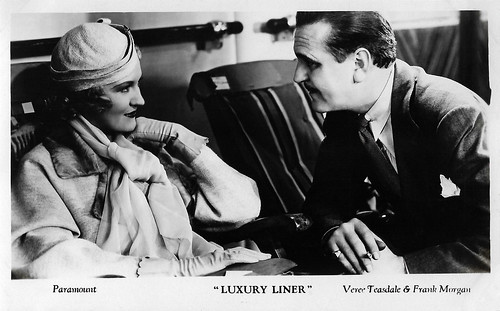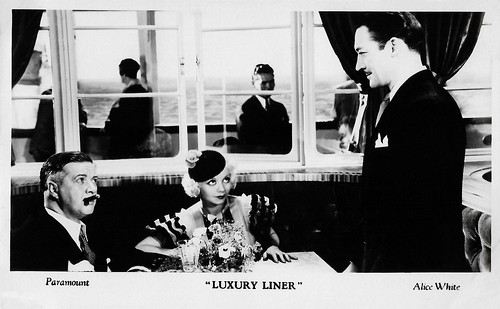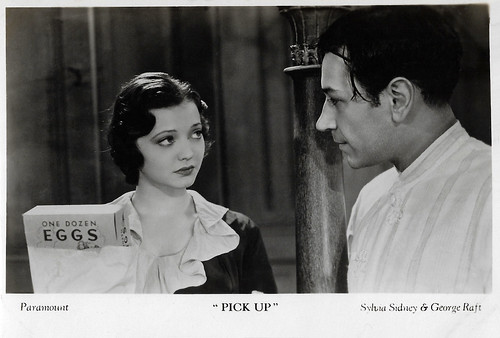The British magazine Film Weekly published an interesting postcard series: Filmshots. Four cards with scenes of a recent film. The series must have existed between ca. 1932 and 1934 and presents known and unknown American and British films of the early 1930s. An interesting period: Hollywood was still 'pre-code'. The Filmshots cards are simple: the pictures are in black and white and some basic credits are added: the (British) film title, the two main actors and the studio. At the backside, only the series title was printed: 'Filmshots by Film Weekly'. Recently I acquired five Filmshots that together show the range of the series.By Candlelight (1933)
![Paul Lukas and Elissa Landi in By Candlelight (1933)]()
British postcard in the Film Shots series by Film Weekly. Photo: Universal.
Paul Lukas and
Elissa Landi in
By Candlelight (James Whale, 1933).
![Nils Asther and Esther Ralston in By Candlelight (1933)]()
British postcard in the Film Shots series by Film Weekly. Photo: Universal.
Nils Asther and
Esther Ralston in
By Candlelight (James Whale, 1933).
![Nils Asther, Paul Lukas and Esther Ralston in By Candlelight (1933)]()
British postcard in the Film Shots series by Film Weekly. Photo: Universal.
Nils Asther,
Paul Lukas and
Esther Ralston in
By Candlelight (James Whale, 1933).
![Paul Lukas and Elissa Landi in By Candlelight (1933)]()
British postcard in the Film Shots series by Film Weekly. Photo: Universal.
Paul Lukas and
Elissa Landi in
By Candlelight (James Whale, 1933).
By Candlelight (James Whale, 1933) is one of the sophisticated pre-code films revolving around a series of mistaken identities and misrepresentations. It is an adaptation of the Austrian play, 'Bei Kerzenlicht', by writers
Siegfried Geyer and
Karl Farkas. Josef (
Paul Lukas) is the valet for Count von Rommer (
Nils Asther) and well trained in the philandering ways of his master. Mistaken for the Count by a maid, Marie (
Elissa Landi), whom he thinks is an aristocrat, Josef shows her a merry time in the Count's Monte Carlo villa. Meanwhile, the Count escapes a situation with Countess von Rischenheim (
Dorothy Revier), when her husband Count von Rischenheim (
Lawrence Grant) makes an unscheduled appearance, by posing as the butler.
Director
Robert Wyler had failed to make a satisfactory start with
By Candlelight so Universal asked
James Whale to continue the film. Whale took
Ted Kent, his favourite cutter, and
John Mescall as the camera director. Whale started the film over from the beginning. He filmed the script as it was for the most part, but he also made a game of it, putting in his own special tricks of the trade. Producer
Carl Laemmle was very happy with the result. He liked the film himself, and it brought in good money just in the nick of time to help save the studio once more, adding some good revenue to the spectacular revenues from Whale's
The Invisible Man which were then really piling up.
Mark Waltz at
IMDb: "this art-deco gem, a fast-moving, well-acted comedy of manners (or lack of...). Lukas, who up to that point was known in Hollywood as the leading man of many women's films, proves himself to be much more debonair than presented in the past. With Landi, he shares some great scenes on a train ride where they mingle with common folk at a town fair. Landi is good in a drunk scene, but its Lukas and Asther who get acting honors here. Whale does a great job with every single detail from the sets, photography, and unmannered performances that remain fresh today as they were in 1933."
Hal Erickson at
AllMovie: "
By Candlelight is chock full of delightfully double-entendre pre-Code dialogue and dextrous directorial touches".
Man of Two Worlds (1934)
![Steffi Duna and Francis Lederer in Man of Two Worlds (1934)]()
British postcard in the Film Shots series by Film Weekly. Photo: Radio (RKO).
Steffi Duna and
Francis Lederer in
Man of Two Worlds (J. Walter Ruben, 1934).
![Steffi Duna and Francis Lederer in Man of Two Worlds (1934)]()
British postcard in the Film Shots series by Film Weekly. Photo: Radio (RKO).
Steffi Duna and
Francis Lederer in
Man of Two Worlds (J. Walter Ruben, 1934).
![Francis Lederer in Man of Two Worlds (1934)]()
British postcard in the Film Shots series by Film Weekly. Photo: Radio (RKO).
Francis Lederer in
Man of Two Worlds (J. Walter Ruben, 1934).
![Elissa Landi and Francis Lederer in Man of Two Worlds (1934)]()
British postcard in the Film Shots series by Film Weekly. Photo: Radio (RKO).
Elissa Landi,
Henry Stephenson and
Francis Lederer in
Man of Two Worlds (J. Walter Ruben, 1934). In the background J. Farrell MacDonald.
With the success of
Robert Flaherty's
Nanook of the North (1922), Hollywood tried to replicate the box office by using Eskimo themes. In
Man of Two Worlds (J. Walter Ruben, 1934) a British explorer (
Henry Stephenson) in the Arctic hires a local Eskimo as an assistant. The earnest but unsophisticated young man called Aigo (
Francis Lederer) happens to see a photograph of the explorer's beautiful daughter and falls in love with her. Soon afterward a medical emergency results in his being flown to London for treatment, where he finally meets the girl he has longed for. Once in Britain, Aigo is treated as a curiosity--like some sort of simple-minded thing instead of a person. He likes what he sees--particularly Sir Basil's daughter. In his mind, he's envisioned that she is destined to be his--and, of course, he's setting himself up for disappointment. No one seems to believe, including the girl, that Aigo has normal human desires and urges. The film was a box office disappointment for RKO.
Martin Hafer at
IMDb: "
Man of Two Worlds is the sort of film that no one would make today. It's very much a relic of the early 20th century and influenced by the real-life story of Minik, a native of Greenland brought back to Europe as a cultural curiosity--and who ended up wasting away and dying away from his native land. (...) Throughout this film, Aigo is treated in an amazingly patronizing fashion. He is some silly, childish savage--sort of like Tarzan but with even less intellect. Offensive? Yes, but also pretty dumb, as ANYONE with even average intelligence would recognize that he is a man and not a thing!"
Bob Lipton at
IMDb: "Modern attitudes towards different cultures may have changed in the seventy-five years since this movie came out, but it still is a good story and the modern viewer can, if he chooses, look upon it as an anthropological record of its own, a record of how the culture of Hollywood viewed other cultures back in its heyday."
Danny at
Pre-code.com: "You can tell
Man of Two Worlds had a nice budget, though. The film makes use of a real polar bear for its animal scenes, and though on a sound stage, the sets are expansive and good looking. The scenes that take place in England are also less confined to interiors, making it feel freer and more visceral, something that Aigo himself is surely feeling as well. But really, the central performance in this film is so utterly awful and irredeemable, it’s a pain to even try and scrounge up compliments for it. Lacking a pulpy tone or a trace of nuance,
Man of Two Worlds is creaky and laughable, an ‘important’ picture whose moral and central performances are now offensive and outdated. It’s a rare movie to find, and here’s my suggestion: don’t find it."
Luxury Liner (1933)
![Alice White and Henry Wadsworth in Luxury Liner (1933)]()
British postcard in the Film Shots series by Film Weekly. Photo: Paramount.
Alice White and
Henry Wadsworth in
Luxury Liner (Lothar Mendes, 1933).
![Verree Teasdale and Frank Morgan in Luxury Liner (1933)]()
British postcard in the Film Shots series by Film Weekly. Photo: Paramount.
Verree Teasdale and
Frank Morgan in
Luxury Liner (Lothar Mendes, 1933). On the card, the first name of Teasdale is written wrong.
![Zita Johann and George Brent in Luxury Liner (1933)]()
British postcard in the Film Shots series by Film Weekly. Photo: Paramount.
Zita Johann and
George Brent in
Luxury Liner (Lothar Mendes, 1933).
![Alice White in Luxury Liner (1933)]()
British postcard in the Film Shots series by Film Weekly. Photo: Paramount.
Alice White in
Luxury Liner (Lothar Mendes, 1933).
Luxury Liner (Lothar Mendes, 1933) is a kind of
Grand Hotel (Edmund Goulding, 1932), a multi-story drama but now on the high seas. Based on a 1932 novel by
Gina Kaus, it is an entertaining and multifaceted look into the various classes of cruise liner society with a very talented cast. The pre-code drama includes birth and death, lots of sexual innuendoes and a combination of comedy that drives the plot and drama that is often poignant. As the film begins the German-American cruise ship Germania is setting sail from Bremen to New York, with a stop in Cherbourg. Dr. Thomas Bernard (
George Brent) begs a friend to find him a place aboard the ship, as his wife (
Vivienne Osborne) has just left him and is supposed to be aboard. The Captain makes Bernard the ship's doctor and he will have to attend to 1001 different problems as they arise. Miss Morgan (
Zita Johann) is the ship's nurse who never dates. Milli Stern (
Alice White) is a third-class passenger who desperately wants to be in first class. Edward Thorndyke (
C. Aubrey Smith) is a former millionaire who's just been released from jail, and millionaire Alex Stevenson (
Frank Morgan) has Dr. Bernard's ex with him but wants to romance an opera singer. While Dr. Bernard fights to get his wife back, Milli comes up with a scheme to make money in the stock market. Of course, there is a lot of drama and fighting and a little romance.
Some of the
IMDb reviewers liked the film: "The Paramount gloss is at its peak here." and "
Alice White gives a delightful funny performance as a gold-digger and the film is worth watching just to see her." However,
Mordaunt Hall, critic for
The New York Times in 1933, was unimpressed, writing, "neither the story nor the dialogue live up to expectations. ... Mr. Mendes was evidently not inspired by the script furnished him and he fails to give more than a haphazard conception of the movement of the vessel, after the first quarter of the film. The attempt at levity is feeble and the clock-work-like manipulation of the happenings is often rather wearying." Hall felt there were "one or two competent performances by the principals" (
C. Aubrey Smith,
Zita Johann and
Vivienne Osborne), but thought that
Frank Morgan was miscast and
George Brent was "not at his best."
Pick-up (1933)
![Sylvia Sidney and George Raft in Pick-up (1933)]()
British postcard in the Film Shots series by Film Weekly. Photo: Paramount.
Sylvia Sidney and
George Raft in
Pick-up (Marion Gering, 1933).
![Sylvia Sidney and George Raft in Pick-up (1933)]()
British postcard in the Film Shots series by Film Weekly. Photo: Paramount.
Sylvia Sidney and
George Raft in
Pick-up (Marion Gering, 1933).
![Sylvia Sidney and George Raft in Pick-up (1933)]()
British postcard in the Film Shots series by Film Weekly. Photo: Paramount.
Sylvia Sidney and
George Raft in
Pick-up (Marion Gering, 1933).
![Sylvia Sidney and George Raft in Pick-up (1933)]()
British postcard in the Film Shots series by Film Weekly. Photo: Paramount.
Sylvia Sidney and
George Raft in
Pick-up (Marion Gering, 1933).
At one stage
Pick-up (Marion Gering, 1933) was going to star
Carole Lombard and
Gary Cooper. Eventually,
Sylvia Sidney and
George Raft were cast, Raft replacing Cooper, who had been held up making a film at MGM. In the script by
Viña Delmar, based on her own magazine serial, the scheme of a pair of married con artists (
Sylvia Sidney and
William Harrigan) goes awry when their victim dies, and they are both caught and imprisoned. When she gets out of prison after a two-year sentence, she tries to put her life back together. Harrigan still has three years to go. On a rainy night, Sidney bumps into
George Raft, who plays an underachieving cab driver who is 'satisfied' with his low-rent life. He first thinks she's a prostitute, but after some hesitation, he invites her home.
John Howard Reid at
IMDb: "At this point, the movie should have stopped (...) between the noirish start and emotive conclusion of this film, we are treated to an irrelevant sub-plot about a depraved but super-lovely and filthy rich temptress (scorchingly played by
Lillian Bond) who sinks her fangs into Raft who, it turns out, is a sucker for rich and ritzy playgirls. Of course, this story allows Sidney to go through her patented pained and injured shtick (...) It seems to take forever for Harrigan to escape from jail and the main plot to start moving again. But when it does, it's a wow and certainly well worth waiting for!"
Bob Lipton at
IMDb: "
Sylvia Sidney was Paramount's low-class weeper star in this period, with a lower-class accent and a beautiful face that could suffer stoically or break out in helpless tears just when the plot demanded it. In this one, she has just gotten out of prison because she and her husband were involved in a badger game and one of their victims killed himself. Her husband is still in jail and she falls in with
George Raft, whose hair is always perfect. They encounter various problems that keep getting worse and worse until they reach the point where you're ready to laugh - except that Miss Sidney is so perfect in these roles, that you simply want to hug her.
George Raft is adequate and for those of you who like such thing,
Charles Middleton, best known as Emperor Ming of Mongo is on hand." The film was a box office hit.
The Private Life of Henry VIII. (1933)
![Merle Oberon in The Private Life of Henry VIII. (1933)]()
British postcard in the Filmshots series by Film Weekly. Photo: London Films.
Merle Oberon in
The Private Life of Henry VIII. (Alexander Korda, 1933).
![Charles Laughton and Elsa Lanchester in The Private Life of Henry VIII. (1933)]()
British postcard in the Filmshots series by Film Weekly. Photo: London Films.
Charles Laughton and
Elsa Lanchester in
The Private Life of Henry VIII. (Alexander Korda, 1933).
![Charles Laughton and Binnie Barnes in The Private Life of Henry VIII. (1933)]()
British postcard in the Filmshots series by Film Weekly. Photo: London Films.
Charles Laughton and
Binnie Barnes in
The Private Life of Henry VIII. (Alexander Korda, 1933).
![Charles Laughton and Everley Gregg in The Private Life of Henry VIII. (1933)]()
British postcard in the Filmshots series by Film Weekly. Photo: London Films.
Charles Laughton and
Everley Gregg in
The Private Life of Henry VIII. (Alexander Korda, 1933).
The Private Life of Henry VIII. (Alexander Korda, 1933) is a rollicking historical biopic of the notorious love-life of Britain's most married monarch, Henry VIII. As the opening credits explain: "Henry VIII had six wives. Catherine of Aragon was the first; but her story is of no particular interest - she was a respectable woman-so Henry divorced her. He then married Anne Boleyn. This marriage also was a failure-but not for the same reason." Hungarian-born director
Alexander Korda directed this British classic, based on a script and story by
Lajos Biró (also from Hungary) and
Arthur Wimperis, written for London Film Productions, Korda's production company. The film features a bravura performance by the young
Charles Laughton as Henry. Of course, some historical cuts needed to be made for the 96-minute long film. So the film begins in May 1536, 20 years into King Henry's reign. His first wife Katherine Of Aragon is sidestepped completely and we only see her successor, the interesting and charismatic Anne Boleyn (
Merle Oberon), as she readies herself for her beheading.
Lejink at
IMDb: "There's much ribald humour, quite racy for the time, in the utterings of the hoi-polloi at the queens' executions and amongst the King's serving staff, while the encounter with the exceeding ugly Anne Of Cleves (
Elsa Lanchester) is played for laughs pretty much from the start." The direction is fast-moving and while telescoping a lot of history into its short running time, does so with wit and flair.
The Private Life of Henry VIII. (Alexander Korda, 1933) was the first British production to be nominated for the Academy Award for Best Picture, but it did not win this Oscar. However, it was still the first non-Hollywood film to win an Academy Award, as
Charles Laughton won the 1933 Academy Award for Best Actor for his performance.
The Private Life of Henry VIII. was a major international success, establishing Korda as a leading filmmaker and Laughton as a box office star. And
Charles Laughton is indeed terrific in the title role. He portrays Henry during nearly twelve years - first as a virile, charming but dangerous man when he's young and as a crouching, old fool in his latest years when he fights to retain youth and yet ages badly due to ill-health. Laughton deservedly was awarded an Oscar for his role. Another highlight is
Elsa Lanchester's memorably eccentric performance as Anne of Cleves. Lanchester, Laughton's real-life wife, plays Anne with a kind of flakey caginess that is funny, fascinating and original. Lanchester actually was lovely, but Anne figures her only way to avoid Henry's attentions is to push out her jaw and act dense when he talks about what her wifely duties entail. She and Laughton have a wonderful comic chemistry as they spend their wedding night playing cards, and it is especially fun to watch Laughton as his character gets some of his own back for all his serial marrying.
Sources:
Hal Erickson (AllMovie),
Mark Waltz (IMDb),
Martin Hafer (IMDb),
Bob Lipton (IMDb),
Danny (Pre-code.com),
John Howard Reid (IMDb),
Lejink (IMDb),
Wikipedia and
IMDb.
Next week: five Filmshots by Film Weekly from the collection of Ivo Blom.
![Francesca Bertini in Malìa (1917)]()
![Francesca Bertini in Malìa (1917)]()
![Francesca Bertini in Malìa (1917)]()
![Francesca Bertini in Malìa (1917)]()






